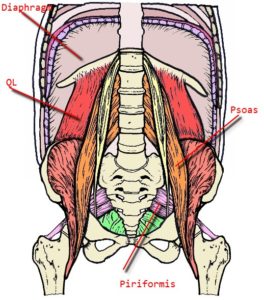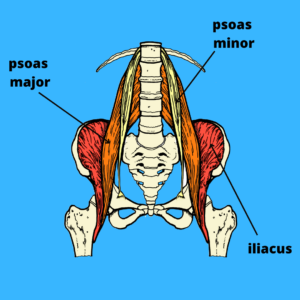
Iliopsoas: The Wonder Muscle
The iliopsoas truly is a muscle of wonder.
As a yoga teacher, I was taught to stretch people. But it wasn’t long before I began to come across people who didn’t seem to be served by stretching.
They would come to class with dogged regularity, but their hips or hamstrings or whatever they hoped to lengthen never seemed to acquiesce.
I came to realize that a muscle that is full of tension cannot be stretched free of that tension.
In certain cases, we must learn to release the tension and/or trauma from a muscle. That is often the only way to get to the point where we can stretch it.
Deep in the bowl of the pelvis lies the iliopsoas, the body’s most important muscle group, which many people have never heard of.
This muscle, my favorite, is both the main engine of movement and the main warehouse for trauma.
The human body is a miraculous creation. It is intricately designed with every part playing a specific role in trying to keep the body in a state of balance.
It is a balance that crosses many spectrums—muscular, skeletal, emotional, physiological, etc.
And this elusive balance requires a great deal of harmony among disparate parts of the body.
At the center of it all is the iliopsoas muscle group. Three muscles line the core of the body on either side.
The psoas major is the body’s main hip flexor and one of only three muscles connecting the lower and upper body.
When healthy, the psoas major in front and the piriformis across the back help us stand upright in a perfect state of balance.
The psoas attaches along the lower spine and comes down to cross over the rim of the pelvis.
It then moves back to insert onto the back half of the inner thigh.

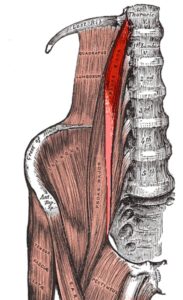
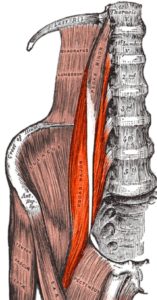
The psoas muscle creates necessary tension.
The tension that the psoas creates across the rim of the pelvis as it moves backward is critical to healthy upright posture.
The second muscle of the iliopsoas is the iliacus, which has a similar job to the psoas.
The iliacus muscle lines the bowl of the pelvis. Along with the psoas, it forms a common tendon that inserts on the back half of the inner thigh.
The third muscle of the iliopsoas muscle group is a very interesting muscle called the psoas minor.
It is considered to be a devolving muscle—according to anatomy books, only 50 percent of the population has this muscle.
The psoas major connects at six points—it attaches at the base of the rib cage and the top of the lower back.
It connects to the outer edge of the first four vertebrae of the lumbar spine, which is the lower back.
It attaches to the front of these vertebrae as well as the front of the 12th thoracic vertebra. The 12th thoracic vertebra is at the base of the rib cage.
Then it crosses over the front of the pelvis and goes backward to attach to the back half of the inner thigh. It attaches to a bony projection called the lesser trochanter.
As a result, the psoas spans and affects many joints.
There are many important joints or junctures in the body, but I always return to four particular ones that involve the iliopsoas.
These are the two femoral joints, where each leg meets the hip bones of the pelvis.
The lumbosacral, where the pelvis meets the spine; and the thoracolumbar, where the lower (lumbar) and middle back (thoracic) meet.
This last spot is where I see the most fundamental postural collapse in most of my clients.
Alignment matters
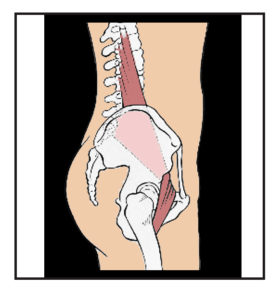 Improper alignment of the skeletal system always leads to imbalances in the muscular system and vice versa.
Improper alignment of the skeletal system always leads to imbalances in the muscular system and vice versa.
The alignment of the pelvis determines a great deal of what happens in the legs, trunk, and arms.
Again, the psoas is one of only three muscles that connect the upper and lower body. And even though it doesn’t connect to the pelvis (57 other muscles do), it exerts a profound influence over its alignment.
The other two muscles are the piriformis and gluteus maximus.
The psoas connects the body across the front and the piriformis and gluteus maximus connect at the back.
These three muscles, when working well, perform a balancing act that allows for successful upright posture.
A problem with one of these muscles always involves a problem with the other as well.
When the psoas is in an unhappy state, there are a host of physical conditions that can be connected to it
- Lower-back pain
- Hip pain
- Groin pain
- Bladder problems
- Constipation
- Poor circulation
- Leg-length discrepancy
- Scoliosis
- Menstrual cramps
- And more…
For instance, a chronically tight iliopsoas on both sides pulls the vertebrae of the lower back forward, which can lead to pain due to compression of the joints and discs of the lower spine.
If the psoas is tight on just one side, it can trigger a contraction of that entire side, causing one leg to be shorter than the other.
It may even lead to the curvature of the spine known as scoliosis.
Learning how and why the psoas is involved with all of these issues can lead to a greater understanding of your health and of the aging process.
And aging well is pretty much all I care about.
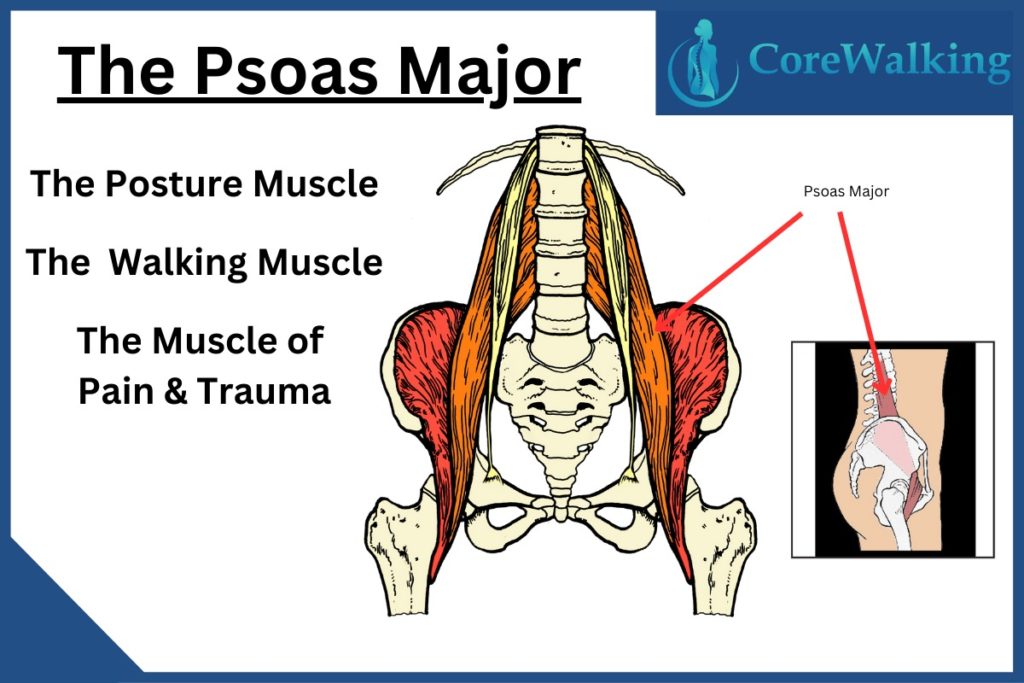
***

